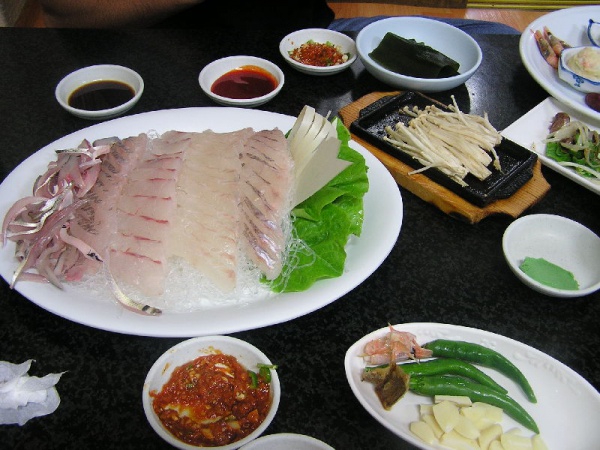Facts About Hoe
Hoe is a traditional Korean dish that has been cherished since the era of the Three Kingdoms of Korea and remains a beloved staple in Korean cuisine. Various types of hoe exist, including uncooked hoe (회) and blanched sukhoe (숙회). The uncooked version features dishes like saengseon-hoe (생선회), which consists of raw fish fillets, and yukhoe (육회), which is raw sliced meat. Mulhoe (물회) is a cold soup prepared with raw fish. Sukhoe, on the other hand, involves lightly blanching fish, seafood, meat, or vegetables.
To prepare hoe, freshly caught fish is filleted for hwareo-hoe (활어회), while aged fish, similar to Japanese sashimi, is used for seoneo-hoe (선어회). Hoe is customarily served with dipping sauces such as cho-gochujang and ssamjang, both of which are based on gochujang (Korean chili paste). It is often eaten wrapped in ssam (wrap) vegetables, including lettuce and perilla leaves. After enjoying hoe at a restaurant, it is common to have maeun-tang, a spicy fish stew made from the leftover parts of the fish.
The tradition of eating hoe is believed to have originated from China during the Three Kingdoms period. The popularity of fish and meat dishes, including hoe, declined with the spread of Buddhism in Korea, which discouraged the consumption of animal products. However, during the late Goryeo Dynasty, as Buddhism’s influence diminished, the consumption of hoe increased. In the Joseon Dynasty, with the rise of Confucianism and the belief that Confucius enjoyed raw meat, the popularity of hoe grew significantly.

 North Korea
North Korea